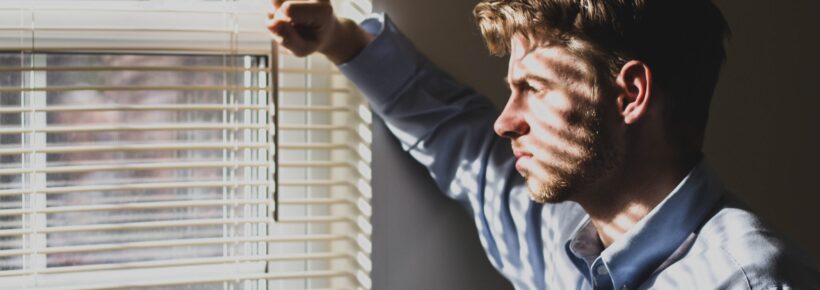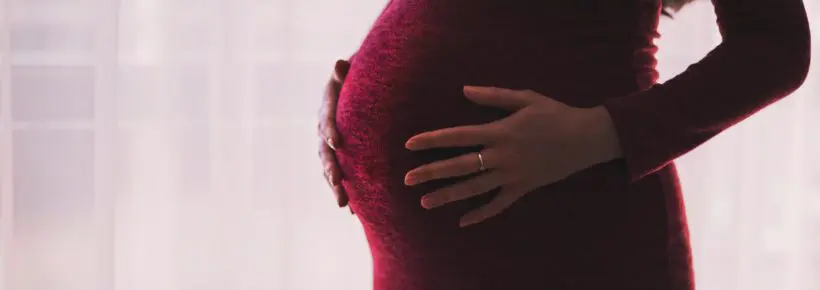Pro-abortion groups claim that legalized abortion is vital for women’s health in the United States since, as they claim, thousands died of illegal abortions every year before the Supreme Court’s Roe v. Wade decision. Population controllers also allege that hundreds of thousands of women still die all over the world because their nations have pro-life laws.
For example, The New York Times generously described a publicity stunt by the International Planned Parenthood Federation (IPPF) in an article nauseatingly entitled “Mothers, Flowers and Death”:
On Friday the north lawn of the United Nations was ablaze with 500,000 carnations placed there by the International Planned Parenthood Federation (IPPF). The flowers weren’t celebratory. They were grave markers―for the 500,000 women who die each year around the globe from the complications of pregnancy and childbirth….Even more carnations would have been on display had not so many third world countries adopted family planning.1
“Abortion saves lives” is a common phrase we hear touted. Even the head of the World Health Organization resounded this phrase in the wake of the Roe v. Wade overruling. And when Roe v. Wade was overturned, he asserted that it would “cost lives.”
Does abortion really save lives? In every abortion, at least one person dies. Imagine a field of carnations placed for the 73 million killed by abortion each year worldwide.
Pro-abortionists also say ad nauseam that, if we “turn the clock back” to the days when women were forced to seek out back-alley butchers, our emergency rooms will once again overflow with desperate women who have been mangled by quacks and “home remedies.” “We will never go back to the days when women died of unsafe, illegal abortions!”
The single most effective tactic used to obtain abortion on demand in the United States and in many other countries was the assertion that a huge number of women died of complications due to illegal and unsanitary abortions each year before the procedure was legalized.
As we have seen, when abortion was illegal, it was in the best interests of the pro-abortion movement to greatly exaggerate the numbers of maternal deaths that resulted from clandestine procedures. Since 1973, the situation has been reversed, and abortion advocates downplay or simply ignore the physical and psychological dangers of legal abortion as part of their strategy to keep “safe and legal abortion” an inseparable component of the medical and social landscape.
Dr. Bernard Nathanson, a former abortionist who admitting to performing 75,000 abortions, asserted that the pro-abortion movement lied about polls showing majority support for abortion. He also said that the numbers given for maternal mortality from abortion were highly exaggerated (10,000 instead of the true 200-250, annually).
Indeed, in 1972 (the year before Roe v. Wade), 39 women died from illegal abortions and 24 died from legal abortions.
Every death is a tragedy, and these numbers are not meant to minimize the loss of these women. But we should be aware of the exaggerated figures we often hear of the “estimated thousands.”
Did Abortion Improve the Maternal Mortality Rate in the United States?
If abortion saves lives, we would have seen a dramatic drop in the American maternal death rate (which includes women who die from abortion) during the years 1970-1974. This time period includes when some states were legalizing the procedure. It ends the year after Roe v. Wade, as the situation stabilized.
The American maternal mortality rate has steadily declined from 37.1 maternal deaths per 100,000 live births in 1960 to 12.7 in 2007. The curve between the years 1970-1974 is very smooth and shows absolutely no deviation from the pattern. This means that the legalization of abortion had little or no impact on maternal mortality.

Issued by the CDC
In more recent years, there seems to have been an uptick in maternal mortality rates.
According to the CDC: “The maternal mortality rate for 2021 was 32.9 deaths per 100,000 live births, compared with a rate of 23.8 in 2020 and 20.1 in 2019.”
The WHO has also reported a slight increase in the decades before Roe v. Wade was ever overturned. However, reported increases in maternal mortality were found to be due to an inconsistency in reporting methods.
Do Legal Abortions Save Lives?
International population control groups routinely claim that the legalization of abortion will greatly improve the maternal health of women. Pro-abortionists say that developing nations that have pro-life laws have high maternal mortality rates. Meanwhile, more advanced nations that have abortion on demand have low rates. Therefore, the legalization of abortion leads to low maternal mortality rates–hence the slogan “abortions save lives.”
A quick (and careless) glance at maternal mortality statistics seem to support this view. The highest maternal mortality rates (MMRs) in the world are in nations with pro-life laws. As of 2020, these include Somalia with 621 maternal deaths per 100,000 live births, Nigeria with 1047, and Guinea-Bissau with 725. Contrasting with these are countries with abortion on demand and single-digit MMRs: Austria, Italy, Estonia, and Sweden each with 5, and Belarus with 1.3
But hold on. Why does pro-life Chile have an MMR of only 15, while Guyana, which has abortion on demand, has an MMR of 112? And why does pro-life Kuwait have an MMR of 7, and pro-life Malta with 3, while pro-abortion Cambodia has an MMR of 218?3
There is a good reason for these apparent anomalies: the status of a nation’s abortion laws has little or no impact on its maternal mortality rate.
The WHO identifies 4 things as the main causes for maternal mortality: severe bleeding; infections; high blood pressure during pregnancy; and unsafe abortions. While unsafe abortion could risk the life of the mother, abortion itself wouldn’t be necessary if we gave women the support system they need. If the mother’s underlying needs were met, abortion would not be considered as a viable “out.” In addition, legal abortion does not necessarily mean “safe” abortion. Despite legalization of abortion, 67% of abortions in India between 2007-2011 were documented as “unsafe.”
We should be focused on providing resources for women in all countries to have safe and healthy pregnancies. Women deserve access to quality prenatal, birth, and postpartum care, and those in crisis must receive the resources they lack to raise a child.

Veronica (left) of Human Life International’s Zimbabwe mission, connects moms with the supplies and medical care they need to choose life. When Thandiwe (right) was pregnant with her second child, Veronica showed her she had options other than abortion.
The governments of Sri Lanka and Malaysia have shown us how to effectively care for women’s health. Both nations have pro-life laws. But instead of embracing the quick, easy and wrong “solution” of abortion legalization, they greatly reduced their maternal mortality rates by making midwives widely available in rural areas and by providing up-to-date equipment and medication for women in labor. As a result, Malaysia’s MMR dropped from 1,088 per 100,000 live births in the 1930s to just 21 in 2020. Sri Lanka’s MMR plunged from a dismal 2,136 in the 1930s to 29 in 2020.4
The maternal mortality ratio in Sri Lanka fell to about 1,000 by 1947, and then halved to less than 500 in the next three years. By 1996, it had fallen to 24. In Malaysia, it halved from 534 over the seven years from 1950 to 1957.4
Both nations achieved this without loosening their abortion laws.4
What About Ectopic Pregnancies?
An ectopic pregnancy is when a fertilized egg attaches to something other than the wall of the uterus, typically the fallopian tube. In such a pregnancy, the baby’s survival is impossible. The unborn child is unable to survive and grow in the fallopian tube, and removing the child from the fallopian tube and replacing it in the uterus is also impossible, at least with current technologies. If left untreated, the fallopian tube can burst, and the mother’s life is at grave risk.
Common treatments for ectopic pregnancies include surgically removing the part of the fallopian tube that the embryo attached to or taking a pill to “dissolve” the embryo.
Many pro-abortionists claim that restrictions on abortion will leave women with ectopic pregnancies untreated, thus needlessly putting their lives in grave danger. In reality, ectopic pregnancies are nothing like elective abortions.
When pro-lifers oppose abortion, we are making a distinction between aborting a child and ectopic pregnancies. Because the child’s survival is impossible in an ectopic pregnancy, and because leaving it untreated puts the mother at great risk of death, removing the fallopian tube to save the mother’s life is not considered by pro-lifers an abortion. Instead, this is what is known as the principle of “double effect.” Double effect refers to when an action is taken that brings about both a good and evil effect. In an ectopic pregnancy, the good effect would be saving the mother’s life, while the unintended evil would be the death of the embryo.
Specifically, the intention with removing the fallopian tube is to save the mother’s life and to not kill the child. Of course, the embryo will die as an unintended result of this procedure, as there are currently no medical practices that can save the embryo in an ectopic pregnancy. Choosing to save the mother’s life by removing part of – or the whole of – a fallopian tube is morally acceptable due to the principle of double effect. Confusingly, ectopic pregnancy treatment is often called an “abortion” by doctors, so the terminology may confuse people.
What does all of this mean when it comes to abortion limitations? Pro-lifers are not advocating for a ban of ectopic pregnancy treatments. Banning abortion will not keep those with an ectopic pregnancy from getting treatment. It will ban elective abortions.
Regarding other life-threatening conditions for the mother, such as uterine cancer, see this article. Suffice to say, if the mother’s life is truly in danger, it is morally licit to perform operations to save the mother’s life as long as the actions do not involve directly killing the child (even if the child dies as an unintended result). Like ectopic pregnancies, these procedures fall under the “double effect” principle.
Some are confused by these semantics and feel Catholic doctrine surrounding these issues is hypocritical. This is far from the case. By banning procedures that directly kill the child while allowing those that save the mother’s life but indirectly kill the child, it is proven through the action itself that the child’s death is an unintended effect. If direct abortions were allowed, that would truly be hypocritical. One cannot claim that they do not intend the child’s death while also directly killing the child. Because actions that indirectly cause the child’s death are allowed, it is in concord with the stated intention of saving the mother’s life.
Final Thoughts
In conclusion, the great majority of maternal deaths in the developing world are caused by poor health care for pregnant women, not the absence of legal abortion. When abortion is legalized in nations which generally have poor health care, the number of abortions dramatically increases, which leads to even more deaths of pregnant women, not less.
The answer to the pressing problem of maternal mortality in the poorer nations of Asia, Africa and Latin America is not to force Western (non)values on the people by helping exterminate their as-yet-unborn next generations. It is to provide properly trained birth attendants, sanitary delivery facilities and supplies, and good prenatal care. A nation’s maternal mortality rate is not determined by the legal status of abortion, but by the quality of medical care provided to pregnant women.
This article was originally published July 2020 by Dr. Brian Clowes and most recently updated July 2023 by Marisa Cantu.
+ Endnotes
[1] “Mothers, Flowers and Death.” The New York Times Editorials/Letters, May 10, 1992, page 16E.
[2] “Abortion.” International Planned Parenthood Federation, at http://www.org/en/what-we-do/abortion/default.htm (April 20, 2009).
[3] “Trend in MMR.” MMR 2020. Accessed June 29, 2023. https://mmr2020.srhr.org/data.
[4] World Bank. 2012. World Development Report 2012: Gender Equality and Development. © World Bank. http://hdl.handle.net/10986/4391 License: CC BY 3.0 IGO. Box #5: “Reducing Maternal Mortality―What Works? Look at Malaysia and Sri Lanka,” page 25.
















